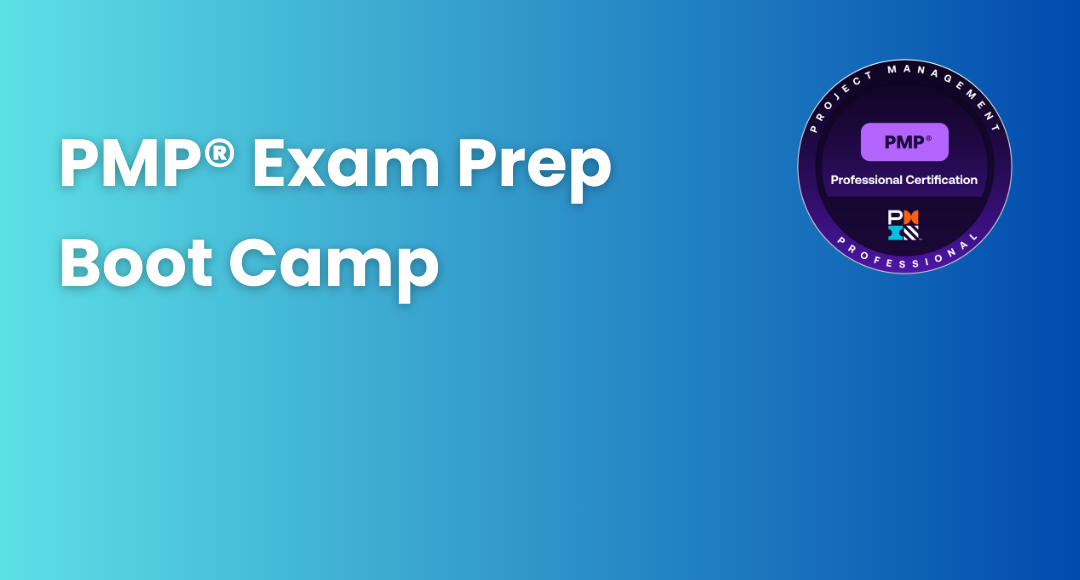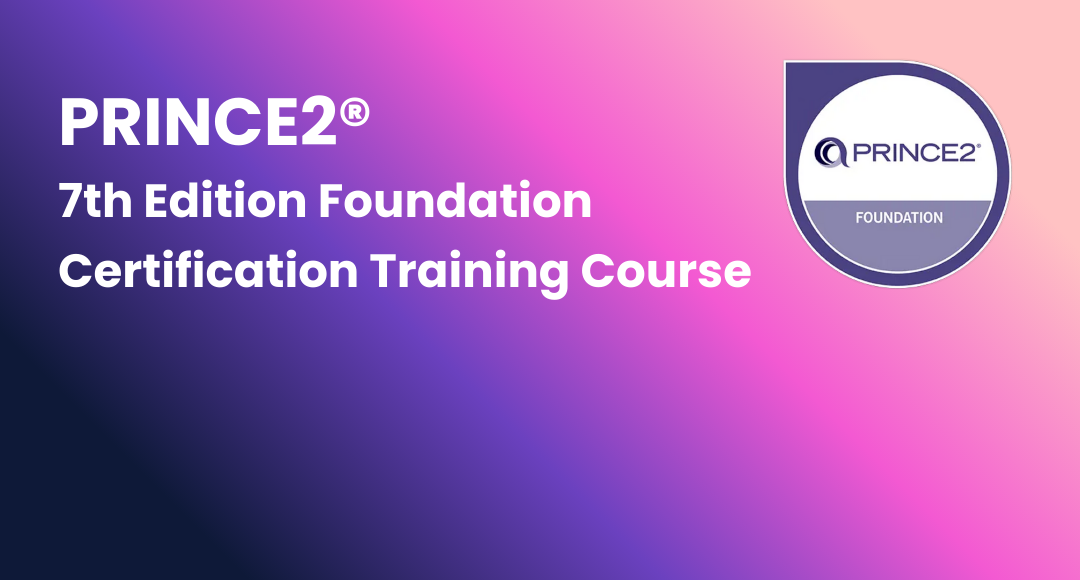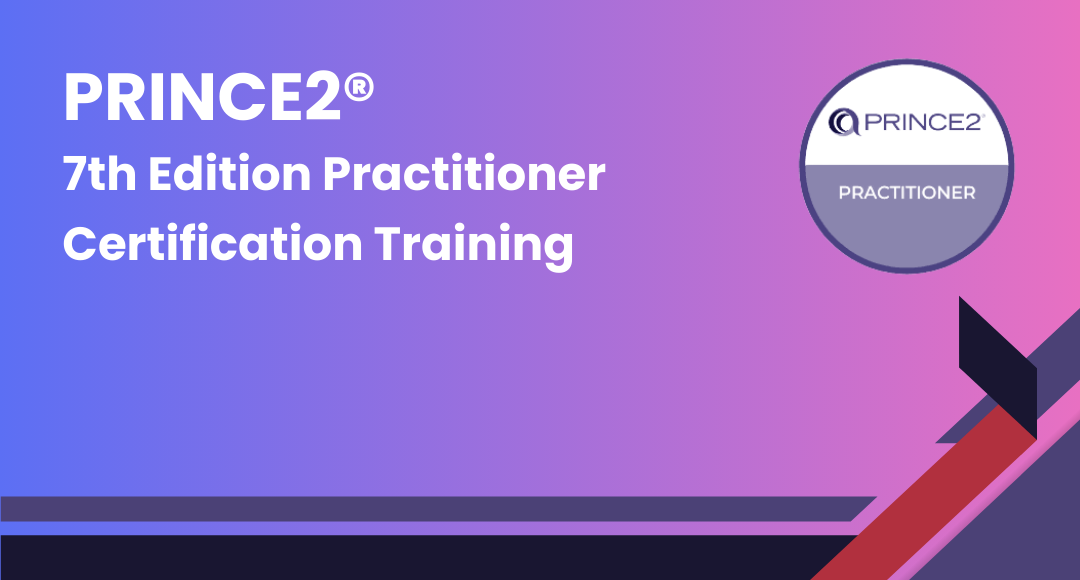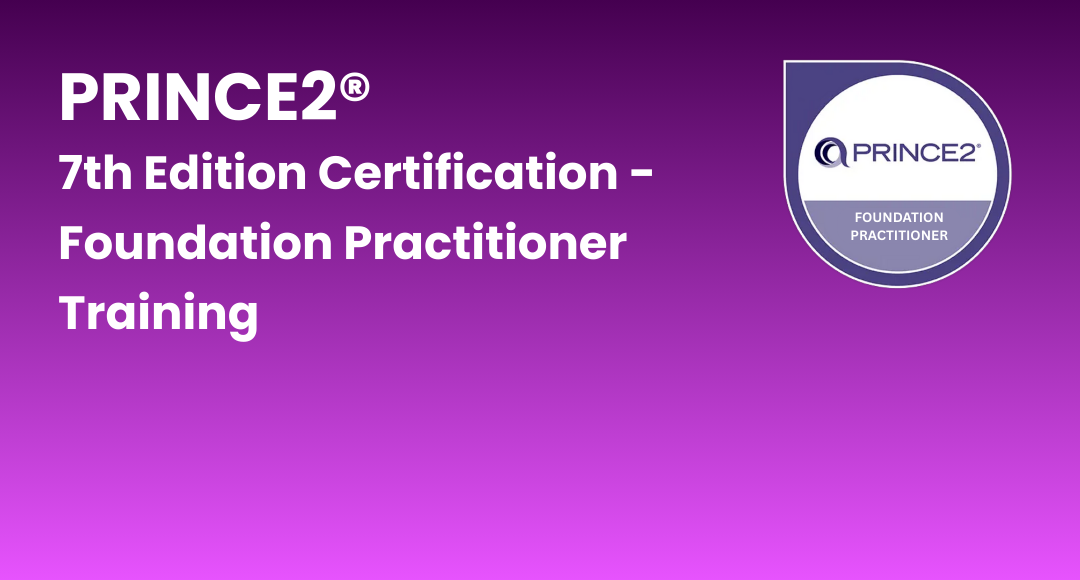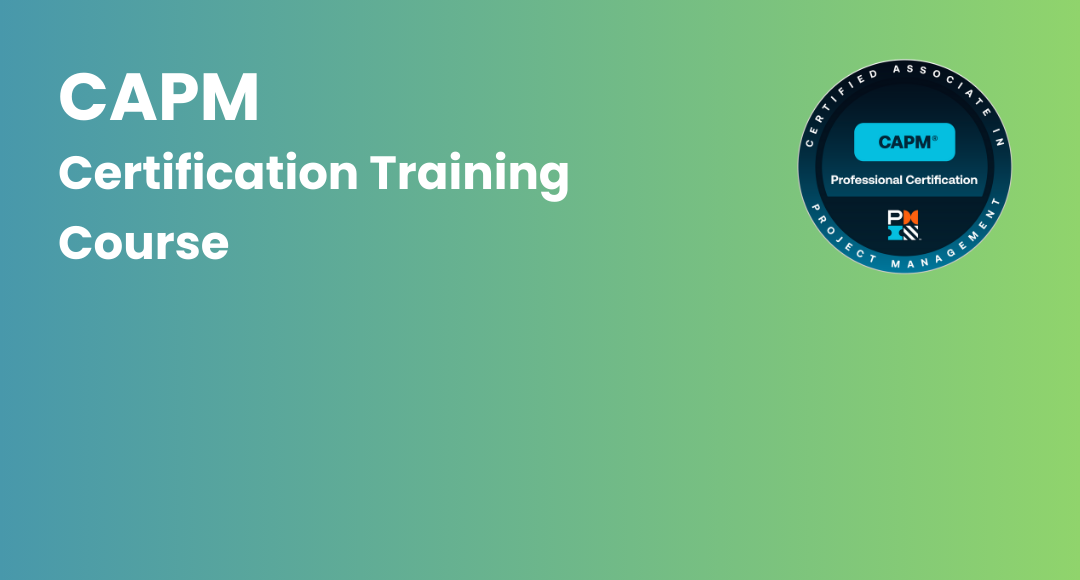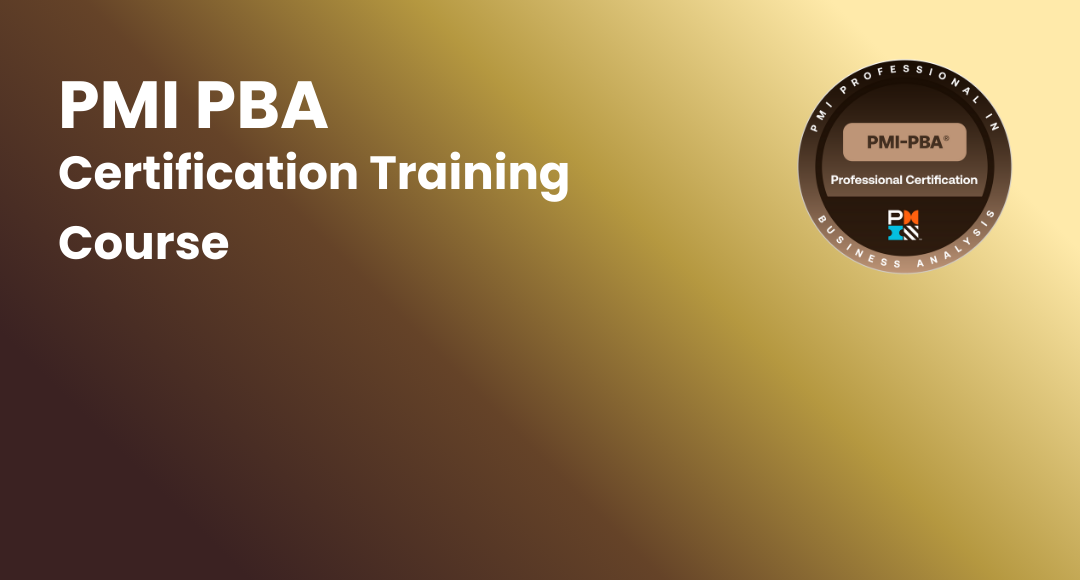Guide to Project Management Processes, Methodologies and Lifecycles
-
 By Aradhya Kumar
By Aradhya Kumar - Published on Mar 16 2023

Table of Contents
Introduction
Project Management Processes Explained
When it comes to building a structure, launching an app, or launching marketing campaigns, every project needs a set of steps to make it happen. These project management processes are fairly consistent, regardless of the field or type of product to be delivered. What is the purpose of these process management practices, and what are they made up of?
Five Project Management Processes
The guide to the Project Management Body of Knowledge (PMBOK Guide) breaks down the management of projects into five phases that are known as "process groupings." The project management processes are generally grouped and described as follows:

Beginning: During this phase, projects are conceptualized and the feasibility of the project is assessed. According to the SME Toolkit, some of the tasks to be completed in this process are determining the goal of the project, the scope of the project, as well as identifying the project's managers and the most important participants, identifying risks, and creating estimates of budget and timeframe.
Plan: Next, the project manager will design an outline that will guide the project from concept to completion. This blueprint will define the project's scope, the resources needed to produce the deliverables, the estimated time, and commitments to financials.
This also defines the strategy for communication to ensure that all stakeholders are informed and kept in the loop during the execution plan and an ongoing maintenance plan. If the project hasn't received approval yet, the document is a crucial element of your pitch. This is a crucial part of the project planning process.
Implementing: the project manager will manage the required procurement for the project as well as staff the team. The achievement of the project's objectives will require effective leadership of team members in the field. PMs are accountable in delegating and supervising the tasks of the project, while maintaining good relations with team members as well as keeping the project within the budget and timeframe.
The PM should therefore be highly organized and a superb leader. This is because they'll have to resolve team issues and other issues that come up during the course of their work, which requires constant and clear communication with team members and other stakeholders. This is a pivotal part of the project planning phase as plan of execution is vital.
Monitoring and Control: During this process, the project managers are able to closely monitor the project's progress in order to ensure that it's developing in a proper manner. Documentation, such as data collection, verbal and written status reports can be utilized. "Monitoring and controlling is closely connected to planning projects.
Planning is what determines what needs to be accomplished. Monitoring and controlling will determine the extent to which it was done," explains SME Toolkit. "Monitoring will reveal any needed correction or changes to the project in order to ensure that the project is in the right direction."
Closing: The closing process group takes place after the project deliverables are created and the project stakeholders have validated and accepted the deliverables. In this phase, the project manager must end contracts with external vendors, supplier consultants, and third-party service providers.
Documentation will be archived, and a final report will be created. Additionally, the last part of the plan for the project—the plan for troubleshooting and maintenance—will be implemented. This rounds up the various groupings of project management processes.
What Is The Project Life Cycle?
The Life Cycle of Projects is a four-step procedure that is followed by almost every project manager when going through the phases of the project's finalization.
This is the typical project lifecycle that most people know about. These steps in project planning provide a structure for managing all kinds of projects in a company. Project managers have conducted studies to find the best method for managing projects.
It was discovered that following a life cycle is crucial for any company that provides services. Following the Life Cycle of a project is the most common method by which teams succeed in their projects.
The professional Services Life Cycle is in place because the typical life cycle of a project doesn't satisfy everyone's requirements. The process is not particularly well-known but is gaining popularity. The typical life cycle for projects can be used by some project managers; however, professional services require a more comprehensive procedure.
Unlike other businesses, in the case of professional services, the primary product is their staff. Professional services offer their expertise to other businesses to earn a profit. Because professional services require the continuous involvement of customers, they require the creation of a distinct project life cycle, which requires a continuous feedback loop that ensures the success of the project.
Understanding these cycles is crucial to getting a deeper understanding of the various things that constitute project management processes.
The Project Risk Management
It refers to the process of continuously identifying, analyzing, and responding to possible risks to the project. The definition of a project risk could be anything that can hinder the project's success, cause a delay in the project's timeline, cause the project to go over budget, or result in a reduction in project performance in another way.
Through effective risk management, it is possible to address any risks that may arise during the course of your project. This will help you reduce the risks and ensure that your project is completed on time, within budget, and on schedule.
A good project risk management strategy isn't reactive. It's proactive. In an ideal scenario, you'll need to develop your risk management strategy during the project planning stage. So, you'll be able to be the best judge of any risks and the impact they could have, and track those risks during the course of the project.
Instead of being in the dark, you'll keep an eye on the potential risks, should they turn into a problem. Risk process management is, after all, crucial to decreasing the costs of the operation.
If you're looking to reduce the risk of a project in a process that has already begun or started, take a look at it to apply the concept of constraint. The theory of constraints is a method to determine the weakest link in the process or project and then address it in order to decrease the risk. Managing risks in a project is an integral part of the project management process.
Project Management Methodologies
A project management method is a set of guidelines and procedures that help you organize your projects to ensure optimal efficiency. It's basically an approach that will help you control projects in the most effective way possible.
The management of projects is vital for teams and organizations; however, for it to be truly efficient, you have to ensure that you are mapping the process of managing your project to your team's type and project type, as well as your organization and the goals.
There are no two projects that are identical (even when you're using helpful features such as templates to duplicate your previous successes). In addition, when you take into account the diverse objectives, KPIs, and production techniques of not just teams of different types but also various types of industries, it's clear that there's no universal solution to managing the project.
What is most effective for one team can be a total nightmare for another team? For instance, the majority of software developers began to realize that the traditional methods for managing projects had a negative impact rather than assisting their workflows, which in turn negatively affected their efficiency and performance. The result was that software teams started to create a brand-new method for managing projects that was developed to address their specific concerns.
After a while, other industries and teams began to adapt the new methodologies for managing projects to suit their particular needs and requirements. It went on and on, using different methods of managing projects that were reused, modified for different industries, and tweaked to suit specific scenarios.
We're left with many different methods for managing projects that we can choose from. How do you determine the best project management strategy for you and your team? Read on to find out!
Project Planning and Management
In order to bring a project to completion, the manager must create a plan for the project. The plan outlines the costs, scope, and timeline of the undertaking. It defines precisely what tasks and activities will be needed and the necessary resources, from equipment to personnel to financing, and how they are able to be sourced.
A well-planned project also takes into account the risk and ways to manage it, which include contingency plans and an approach to communication to keep everyone informed and engaged.
A project manager prepares the plan for managing the project based on suggestions from the project team and other important participants. A project Management Plan is an official, endorsed document that outlines the manner in which the project will be executed, tracked, monitored, and managed.
It can be a summary or a full-length document that can include baselines, subsidiary management plans, as well as other plan documents. This document will determine the method that the team of project managers will use to complete the project management requirements of the project.
The work progresses and the efficiency of the undertaking are assessed by what is known as the measure of the performance baseline, which is part of the management plan for the project. A scope baseline as well as the schedule baseline and the cost baseline are called the baselines for performance measurement.
If there are deviations from the baseline when the work is being completed, the project manager must deal with the issue by making adjustments to fix the deviation. If these adjustments don't rectify the deviations, formal changes to the baselines will be required.
Project Management Life Cycle
The life cycle of managing projects defines the high-level process for delivering an effective project. In every dollar spent on projects by businesses within the United States, $122 million was wasted because of the poor performance of the project, as per Project Management Institute Research.
The waste of money and resources can be prevented by effective management of projects, since nearly 57% of unproductive projects fail because of communication issues. Through the phases of the management cycle, when you have an idea for a new project, establish its objectives, plan its implementation, and then ensure that it is completed.
The project management lifecycle is typically divided into 4 phases: initiation, planning, implementation, execution, and closure. These four phases form the route that will take your project from its beginning to its point of completion.
Note: Some methods include a fifth stage—controlling or monitoring. However, in our case, that is covered by the execution and closing phases.
Project Controlling
Effective project control can be used to provide timely information about the project, which allows the project manager to implement corrective actions to ensure the project is on track. Project control is a way of comparing plans for objectives as well as risks, requirements, budgets, schedules, and requirements against the actual results being accomplished.
The base of these goals and metrics comes from the initial business analysis that identifies the requirements of the project. Any weaknesses in the business analysis directly correlate to major issues and deviations from the project. Project control involves the regular examination of reports and metrics, which will reveal any deviations from the baseline project.
The variances are assessed by comparing the performance metrics during the execution phase against the baseline metrics set at the time of the planning phase. These variances are integrated into control processes to assess their significance.
The impact on Project Control
Project control has a direct relationship to the project's progress and stakeholder expectations. Projects seldom fail due to a single issue. Failure is more often the result of a series of small problems that, when taken individually, have a negative impact in a particular area of the project, but when taken over the entire scope of the project, these small factors can result in significant changes on schedule, cost, or risk.
They could manifest in the form of deviations from the initial project plan. Controlling processes and processes controlling is basically controlling and monitoring the key elements of project management, such as quality, scope, timing, and cost. The Project Management Body of Knowledge (PMBOK(r) Guide) defines the most important controlling procedures as:
* Control of integration changes
* Control of scope change and verification of scope
* Control of the schedule
* Controlling and monitoring risks
* Quality control
* Cost control
* Project progress and performance reports
Taking the help of a reputed accreditation platform like Sprintzeal to understand the various stages of project management can prove quite beneficial for those looking to upgrade their skillset. Right from the initiation of the project, a process management plan needs to be in place.
This is why having an understanding of project management processes or the various phases of a project can prove quite useful. One needs to be able to change the management plan as per the intricacies of every unique project.
Phases of Project Management
Managing a project isn't a simple task, no matter how big or broad the requirements are. From planning the smallest details to coping with the constantly changing demands of clients to delivering the products on time, there are many things that can go wrong.
When you split the task into manageable steps, each with its own set of goals and deliverables, it's easier to manage the process and the quality of your output. Understanding these project management phases is crucial to understanding project management processes.
The planning and effort needed to finish a project could be overwhelming. There are dozens, if not hundreds, of tasks that have to get completed at the required time and in the proper order. Project managers are usually able to better manage the whole scope of a project by breaking it down into the five phases that comprise the life cycle of managing projects. These different stages of project management are what ultimately constitute project management processes.

Diffusing your work into these five management phases can provide structure and help to simplify them into easy-to-follow steps.
Project Initiation
The initial phase of the life cycle is the project's inception. This is the time when the value of the project and its feasibility are assessed. Project managers usually use two assessment tools to determine which option to go ahead with for the project:
• Business Case Document: This document explains the necessity of the project and contains an estimate of the potential financial advantages.
• Feasibility study: This is a review of the project's objectives, timeframe, and expenses to determine whether it can be completed. It weighs the needs of the project and the available resources to determine if taking on the project is a good idea.
Teams stop pursuing projects that are considered to be inefficient and/or impossible to implement. If they are able to pass these two tests, then they may become part of specific project staff or an appointed project office.
Project Plan
A project plan is a collection of formal documents that outline the control and execution phases of the plan. The plan includes aspects of managing risk communication, resource management, and risk management, and also addresses the scope, cost, and schedule benchmarks.
Software for planning projects is utilized by managers of projects to make sure the plans they create are complete as well as robust. The plans, often referred to as project management planning, provide answers to project-related issues such who, which, what, when, why, and how. It's more than just a graph that lists tasks and due dates. The aim of a plan is to direct the execution and monitoring of project phases.
Project Execution
The execution stage is the part of the project when everything that your team has thought of is implemented. Your team will do all it can to get projects off to a positive start. The kickoff meetings are held to ensure that all important people are on the same page. You sketch out detailed timelines and work with everyone on a plan for the project. The pieces are set. Then...the wheels broke off.
Deadlines are repeated. This project plan has become more of a suggestion than a guideline. There's frustration and confusion, and you're all feeling as if you've wasted the time spent trying to get your ducks in the right order.
What's the issue? Your project's plan is flawless; however, your execution of the project is seriously inadequate.
Project execution is working hard and executing everything you've written in your project plan. Simply put, you're using the strategies to make sure the project gets to the final stage.
There is also the possibility of hearing the term "project execution" used to refer to project implementation. It's a fancy term that means the same thing.
Execution is the third phase in the normal lifecycle of projects, which has four phases that include initiation, planning, execution, and finally, closure.
Most Popular and High Paying Project Management Certifications:
CAPM® Certified Associate Project Management
PRINCE2® Foundation Practitioner
Project Monitoring and Control
Project Monitoring and Control activities take place in conjunction with Project Execution Process Group activities to ensure that, as the project work is carried out, the project is monitored and controlled through the implementation of the proper level of supervision and corrective actions.
The project is monitored and compared regularly to the plan of work to ensure that it stays within acceptable deviations in the cost, schedule, and scope. It also ensures that risks and challenges are continuously evaluated and rectified as required.
The purpose of monitoring and controlling processes is to detect issues before they occur and take corrective action. Corrective action may mean revisiting the Planning Process Group and updating the Project Management Plan as needed, with the ultimate aim of bringing the plan in line with the project's goals and limitations and improving the future process to prevent repeating the same mistakes.
Conclusion
Learning the art of managing projects and curating them to the specific needs of the company can go a long way toward increasing the efficiency of a project and, in a larger context, the company itself. Therefore, it has become a highly sought-after skill set among recruiters. After all, the Project management processes are what determine the efficiency of the workplace.
Therefore, with further ado, it would be prudent to take the help of a qualified platform like Sprintzeal and start learning the art of understanding project management processes and learning in-depth the subject of project management planning.
To get details about the best project management certifications, chat with a course expert.
Subscribe to our Newsletters
Popular Programs
CAPM® Certified Associate Project Management
Live Virtual Training
- 4.9 (962 + Ratings)
- 71k + Learners
Trending Posts
Remote Project Management Success: Key Strategies and Career Opportunities
Last updated on Mar 27 2025
Project Management Life Cycle and Its Phases
Last updated on Mar 27 2023
Resource Manager Interview Questions and Answers 2026
Last updated on Aug 29 2022
How Microsoft Balances Innovation and Project Management?
Last updated on Dec 23 2024
Project Integration Management Guide
Last updated on Aug 5 2022
What Are Project Fundamentals? A Quick Guide
Last updated on Jul 5 2023
Categories
- Other 69
- Agile Management 48
- Cloud Computing 56
- Project Management 174
- Big Data 66
- Business Management 88
- Digital Marketing 78
- IT Service Management 29
- Programming Language 58
- AI and Machine Learning 78
- IT Security 112
- Quality Management 78
- IT Hardware and Networking 26
- Microsoft Program 4
- Workplace Skill Building 13
- Risk Management 9
- Information Security 8
- Leadership and Management 9
- Corporate Training and Development 1
Trending Now
Issue Log in Project Management - Uses and Importance
ArticleSupply Chain Response And The Factors Involved In It
ArticleBest Agile tools for Project Managers in 2026
ArticlePMI-PMP® Exam Changes Explained in 5 Minutes
ebookProject Initiation Phase - Importance and Roles Involved
ArticleDelphi Technique and Its Role in Project Management
ArticlePMBOK Guide and Project Management Certification Updates 2026
ArticleHow to Use Google Calendar as a Project Management Tool
ebook10 Reasons Why You Should Get PRINCE2 Certification
ArticleCAPM Cheat Sheet 2026
ArticleCAPM Certification Study Guide
ArticleCAPM Certification Exam Preparation Guide 2026
ArticleTop Benefits of CAPM Certifications
ArticleGuide to Advancing Project Management Career with PMP Certification
ArticlePMP Vs PRINCE2 - Which Project Management Certification is Better?
ebookProject Management Interview Questions and Answers for Managers
ArticleProject Management Software to Use in 2026
ebookBest project management certifications in 2026
ArticleProject Feasibility Study in Seven Steps
ArticleCAPM vs PMP – Which Project Management Certification Is Better?
ArticleProject Scope Management Guide 2026
ArticleProject Management Complete Guide 2026
ArticleCAPM Exam – Difficulty, Details and Preparation Tips
ArticleWhat is Project Management?
ArticleIs it worth getting the CAPM certification?
ArticleIs PMP Better than MBA?
ebookWhat is PMI ACP certification?
ArticleIs PMP exam difficult?
ArticleIs PMI ACP worth it?
ArticlePMP or CAPM – which is better?
ArticleWhat is pass percentage for the CAPM exam?
ArticlePMP or PMI ACP – which certification should you get?
ArticlePMP Certification Cost Details
ArticleHow to get PMP certification - Guide 2026
ArticleHow to create an effective project plan
ArticleTop Project Manager Interview Questions and Answers 2026
ArticleGuide to Change Management for Organizational Transformation
ArticleResource Manager Interview Questions and Answers 2026
ArticleTop Project Manager Qualifications and Career Path in 2026
ArticleNetwork Diagram - Types, Topology and Use in Project Management
ArticleProject Management Life Cycle and Its Phases
ArticleProcess Capability Analysis Explained
ArticleFinancial Risk and Its Types
ArticleConstruction Project Management - Roles, Stages and Benefits
ArticleRisk Management Strategies in Project Management
ArticleProject Management Principles - 12 Essentials
ArticleProject Management Framework Guide
ArticleStrategic Management Guide 2026
ArticleProject Management Books List - Best of 2026
ArticleProject Documentation and Its Importance
ebookProject Management Tips - Best of 2026
ArticleProject Management Apps Best of 2026
ArticleDigital Project Manager – Skills, Salary, and Scope
ArticleProject Communication Plan – How to Create and Use
ArticleEarned Value Management and Its Significance
ArticlePlanning Poker Estimation Technique
ArticleProject Management vs Product Management
ArticleProject Crashing in Project Management
ArticleProject Controlling and its Importance in Project Management
ArticleProject Report and its Significance in Project Management
ArticleEstimate at Completion - Formulae and Calculations
ArticleProject Cost Management Guide 2026
ArticleProduct Lifecycle Management
ArticleProject Portfolio Management Guide
ArticleProgram Manager vs Project Manager - Comparison of Roles and Careers
ArticleWBS Dictionary - A Beginner's Guide
ArticleStakeholder Analysis and Stakeholder Management Guide
ArticleProject Management Phases Explained
ArticleProject Management Knowledge Areas
ebookLeadership Theories for Managers
ebookPMP Pass Rate in 2026 - Guide to Clear the PMP Exam
ebookProject Schedule Management Guide for Beginners
ebookProject Integration Management Guide
ArticleProject Risk Management Guide
ArticleProject Resource Management Guide
ArticleProject Quality Management Guide
ArticleProject Procurement Management Guide
ArticleProject Deliverables in Project Management
ebookConflict Resolution in Project Management
ebookPERT vs CPM in Project Management
ebookGantt Charts - The Ultimate Guide
ebookWork Breakdown Structure in Project Management
ebookTop Gantt Chart Makers in 2026
ebookGantt Chart Tools - Best of 2026
ebookHow to create a work breakdown structure
ebookProject Manager Resume Guide – Best Tips and Examples
ebookProduct Management Frameworks - The Ultimate Guide 2026
ebookProduct Planning - A Beginner's Guide
ebookWhat is Product Management? - A Beginner's Guide
ebookGuide to Project Stakeholder Management
ebookPMP® Certification Salary: Job and Salary Scope in 2026
ebookTop Project Engineer Skills
ebookGuide to Technical Project Management
ebookTop 10 project management competencies
ebookNegotiation in Project Management: The Utimate Guide
ebookTime Management in Project Management - Steps to Implement it
ebookTop Program Manager Skills of Successful Program Managers
ebookA Brief Guide to Conflict Management Approaches
ebookWhat is a Risk Management Plan? A Comprehensive Guide
ebookWorkflow Diagram - Steps to Create, Symbols, Types, and Uses
ebookBest Practices to Measure Resource Utilization
ebookWorkload Management: How to Optimize Your Team’s Workload?
ebookWhat is Project Execution? A Comprehensive Guide
ebookProject vs Program Management: Key Differences
ebookKanban Methodology in Project Management – A Complete Guide
ebookHybrid Project Management Guide 2026
ebookProject Characteristics: Key Elements in a Project
ebookThe Ultimate Guide to the Waterfall Methodology in Project Management
ebookProject Budget: Definition, Overview & How to Create One
ebookThe Ultimate Project Kickoff Meeting Guide
ebookProject Timeline: How to Build One, Definitions, and Examples
ebookProject Scope Statement: How to Write One With Example
ebookStatement of Work in Project Management Guide 2026
ebookProject Management in Product Development : Essential Role
ebook10 Best Change Management Tools to Use
ebookMastering Resource Scheduling to Unlock Project Success
ebookProject Risk Analysis: Tools, Templates & Best Practices
ebookHow to Write a Project Summary: Four Easy Steps
ebookTop Leadership Skills: Mastering the Art of Effective Leadership
ebookHow to Write a Project Descriptions: A Step-by-Step Guide
ebookWhat is Project Monitoring? A Comprehensive Guide
ebookWhat Are Project Fundamentals? A Quick Guide
ebookKanban Board: A Detailed Guide to Understanding and Usage
ebook10 Effective Management Styles for Leaders (With Real-Life Examples)
ebookProduct Manager Career Path: What to Expect
ArticleCareer Path for Program Manager - Strategic Navigation for Professional Growth
ebookExploring Career Path for Product Owner
ebookAn Ultimate Guide to Project Coordinator Career Paths
ebookHow to Become an ISO 21502 Lead Project Manager
ArticleWhat are the Basics of ISO 21502 Foundation? A Brief Guide
ebookThe Role and Responsibilities of an ISO 20400 Lead Manager
ArticleEnergy Saving Standards and ISO 50001 Best Practices
ebookComparing Different ISO Certifications for Project and Energy Management
ebookGuide to ISO Certifications for Effective Project and Energy Management
ArticleWhy ISO 50001 is the Perfect Match for Energy Efficiency?
ArticleAI Tools for Project Managers: A Game Changer for Project Success
ArticleAbout Disney’s Project Management: Where Magic Gets Real
ArticleMcDonald's Recipe to Success - A Perfect Project Management Case Study
ArticleToyota’s Project Management: A Road to Greatness and Innovation
ArticleNetflix's Binge-Worthy Project Management
ebookUnder Armour’s Project Management Approach
ArticleWipro Project Management: Core Lessons from Tech Giant
ArticleProject Management at Google: Tools and Success Stories
ArticleCoca-Cola Project Management Strategy and Key Insights
ArticleAI in Project Management: Transforming the Future of Work
ArticleBehind the Scenes: How Apple Executes Projects with Flawless Precision
ArticleTesla's Advanced Project Management: Accelerating the Future
ArticleBeats to Business: Spotify's Project Management to Redefine Music
ArticleTop AI Project Management Software to Elevate Your Workflow
ArticleProject Management Office: Step-by-Step Guide to Start a PMO
ArticleWhat is a Project Management Information System?
ArticleHow Microsoft Balances Innovation and Project Management?
ArticleWhat is Agile Project Management? A Beginners Guide
ArticleIKEA Project Management: What to Learn and Stay Competitive
ArticleHow Did Nike Become a Global Leader?
ArticleIntel's Master Project Management Formula
ArticleSamsung Pioneer in Project Management: The Secret Behind It
ArticleAmazon Logistics Strategies That Dominate Retail
ArticleRemote Project Management Success: Key Strategies and Career Opportunities
ArticleStreamlining Workflows: The Best Digital Tools for Professionals
ArticleUnderstanding the Financial Risks in Sponsorships and How to Avoid Them
Article3 Real Disasters That Teach Critical Project Risk Planning Lessons
ArticleInterview scheduling automation: Streamlining the candidate experience
Article3 Quality Gaps That Can Ruin Your Project Outcomes
ArticleBest 4 Construction Drawing Management Tools to Boost On-Site Efficiency
ArticleEssential Jira Interview Questions for 2026
ArticleProduct Development Cycles That Keep Innovation on Schedule
ArticleSmarter Projects with AI
ArticleLegal Project Management for PMs: A Practical Starter Guide
ArticleProject Manager Job Description: Roles, Responsibilities, and Skills
ArticleProduct Analyst Job Description – Key Duties and Career Path
Article7 Team Assessment Tools for Project Management
ArticleHow MVP Development Is Transforming Project Management
Article
